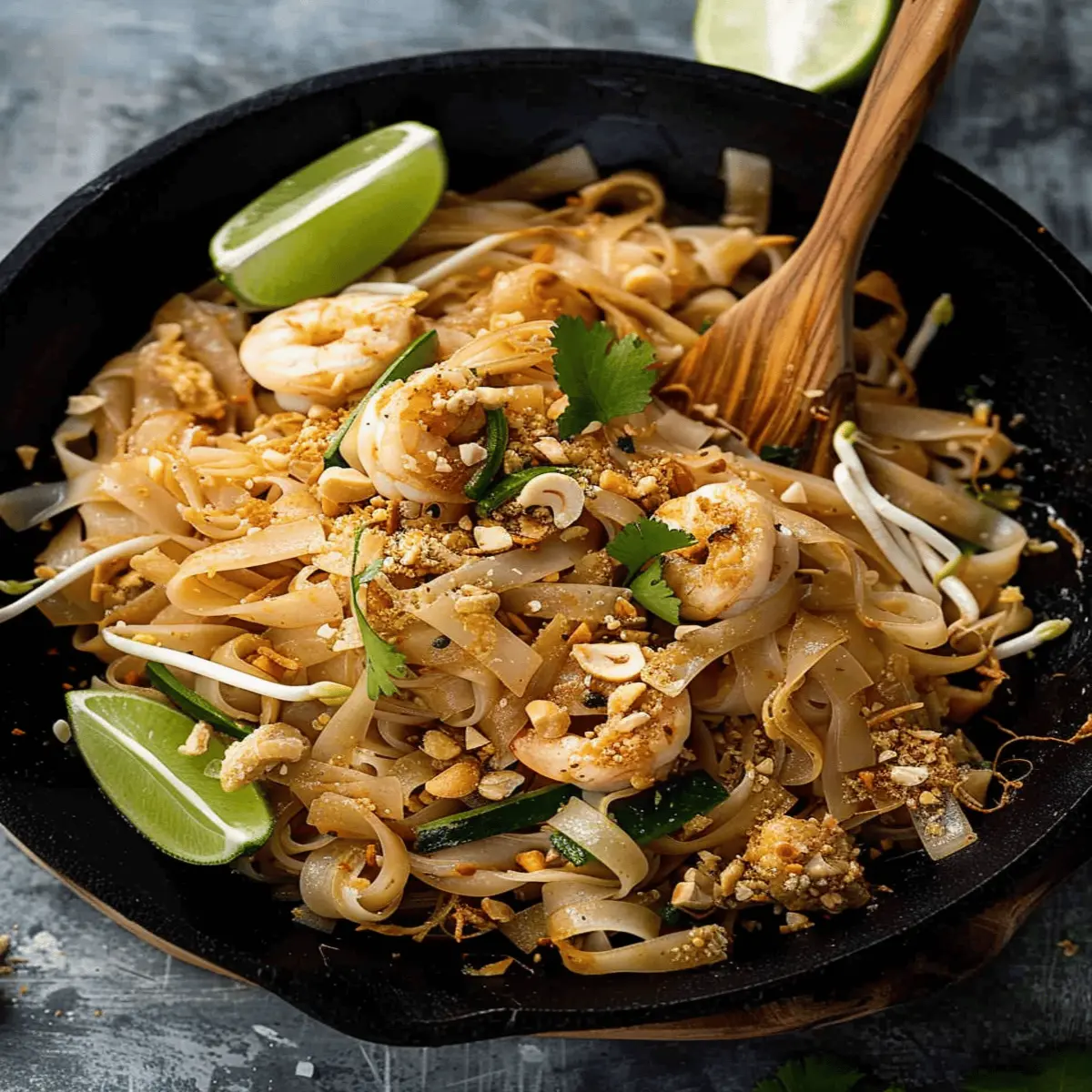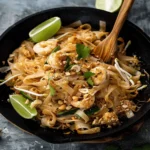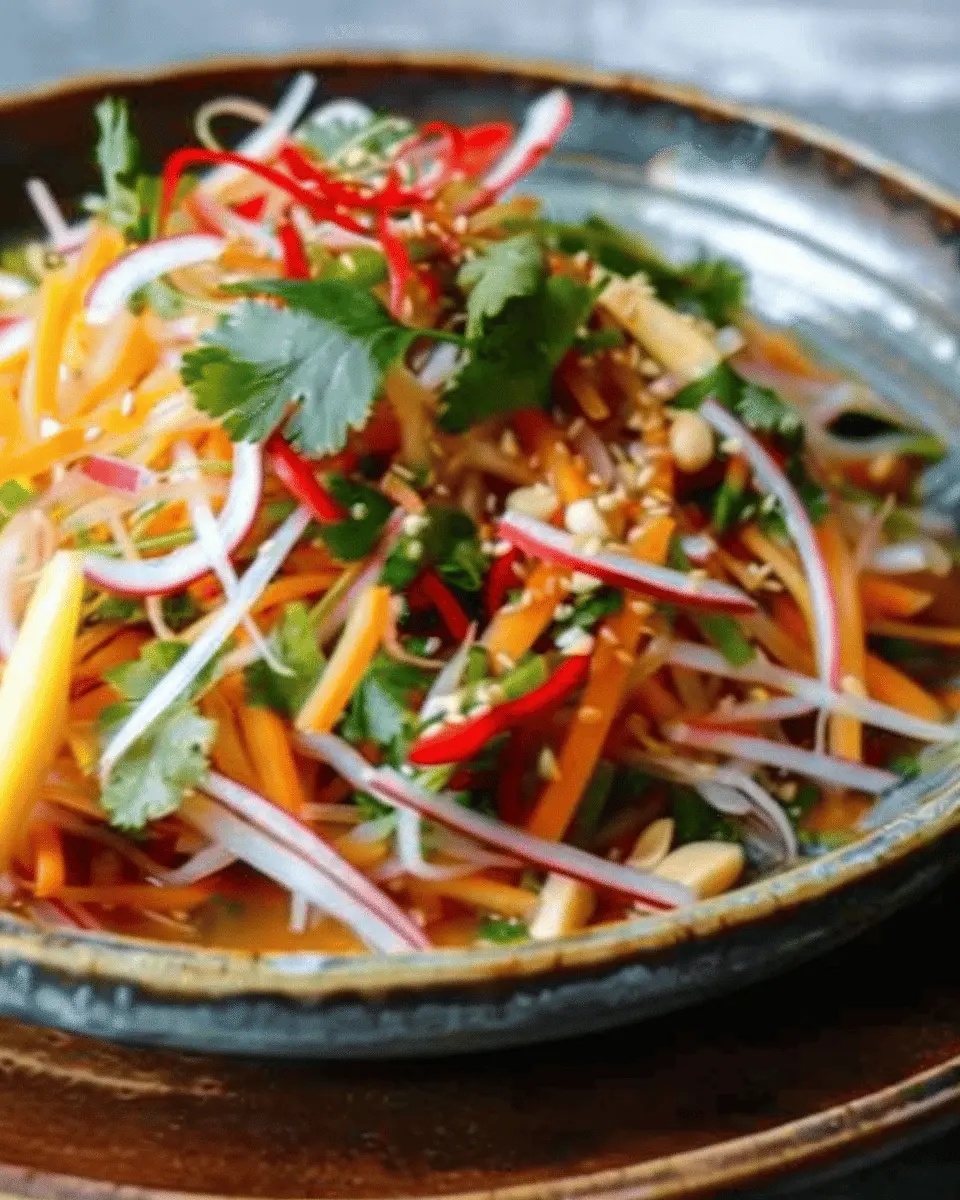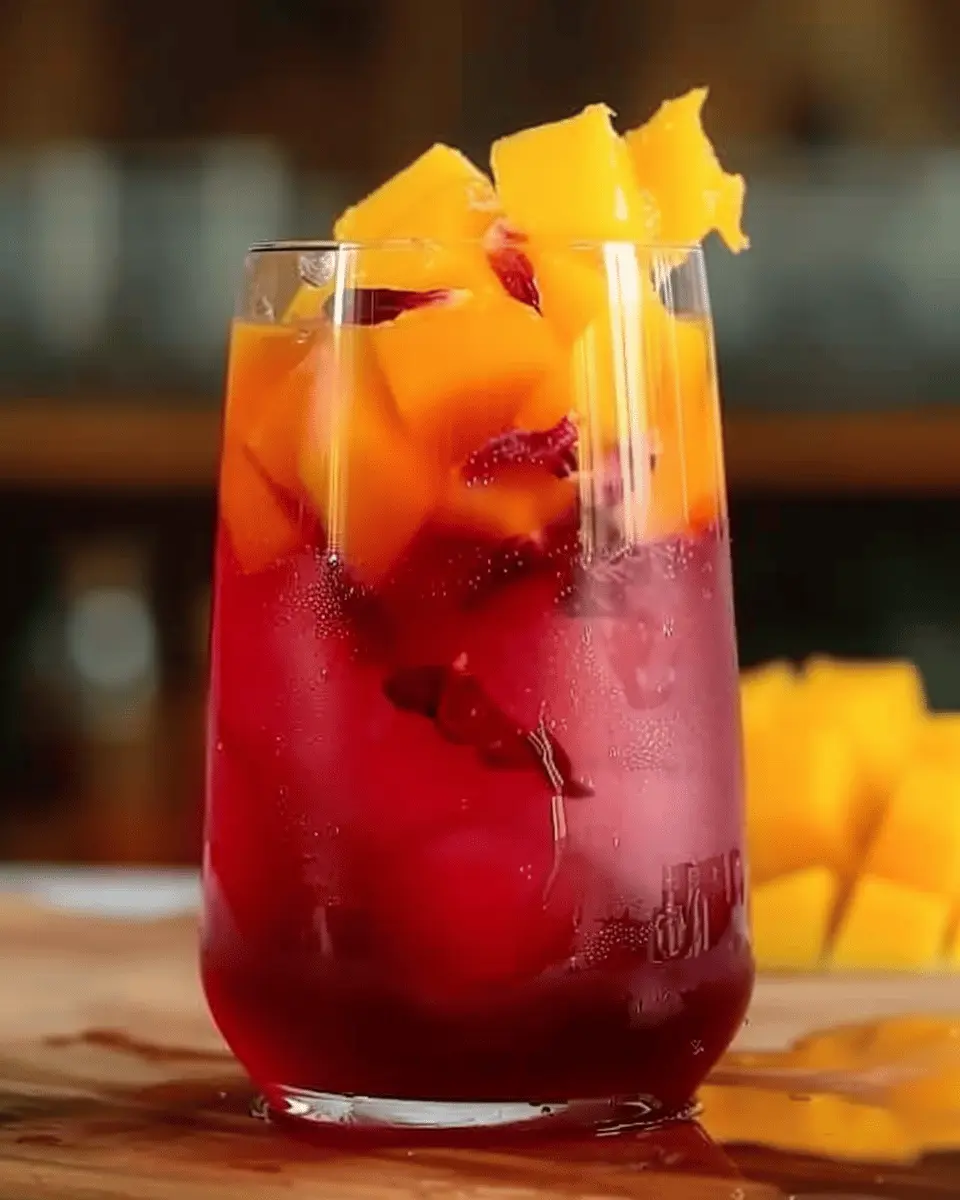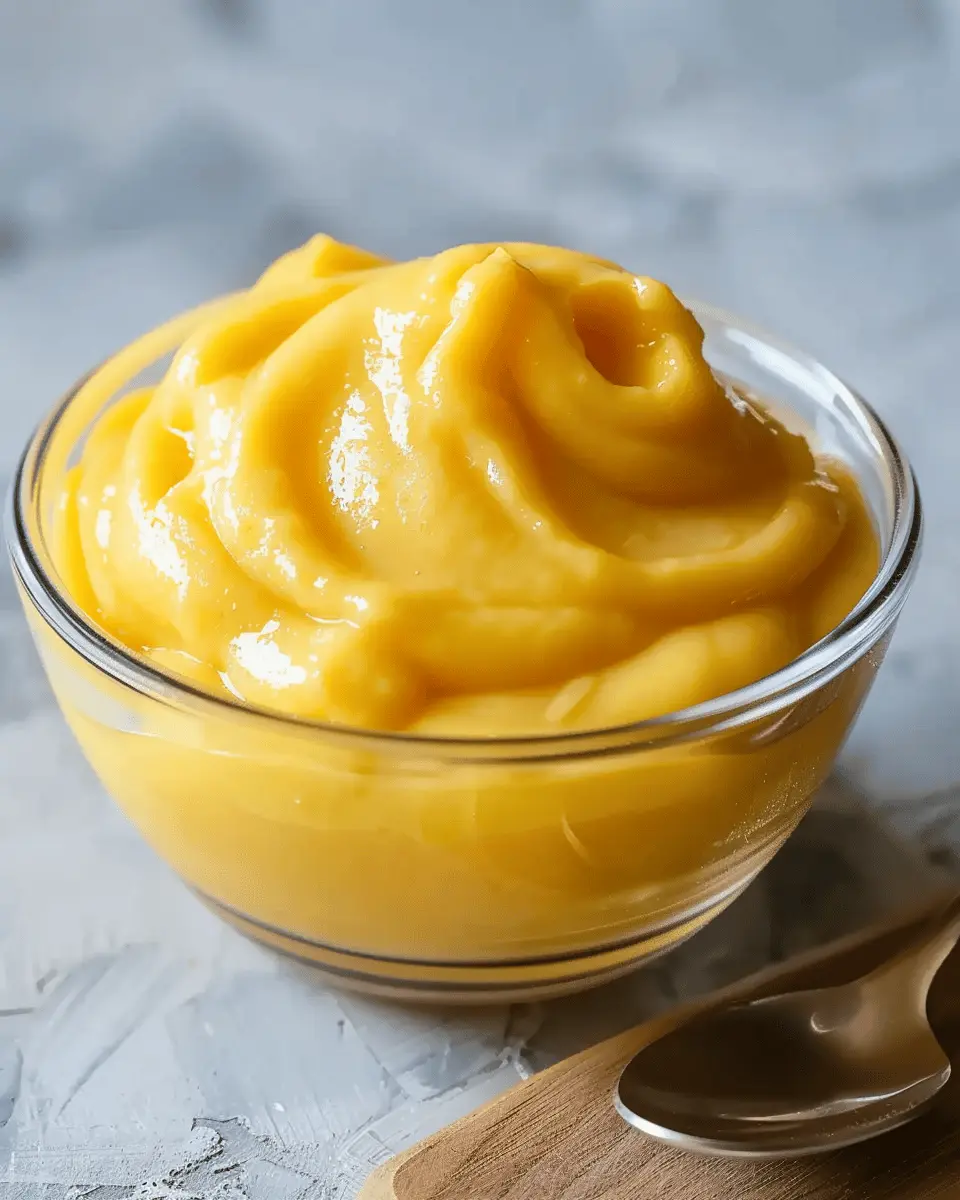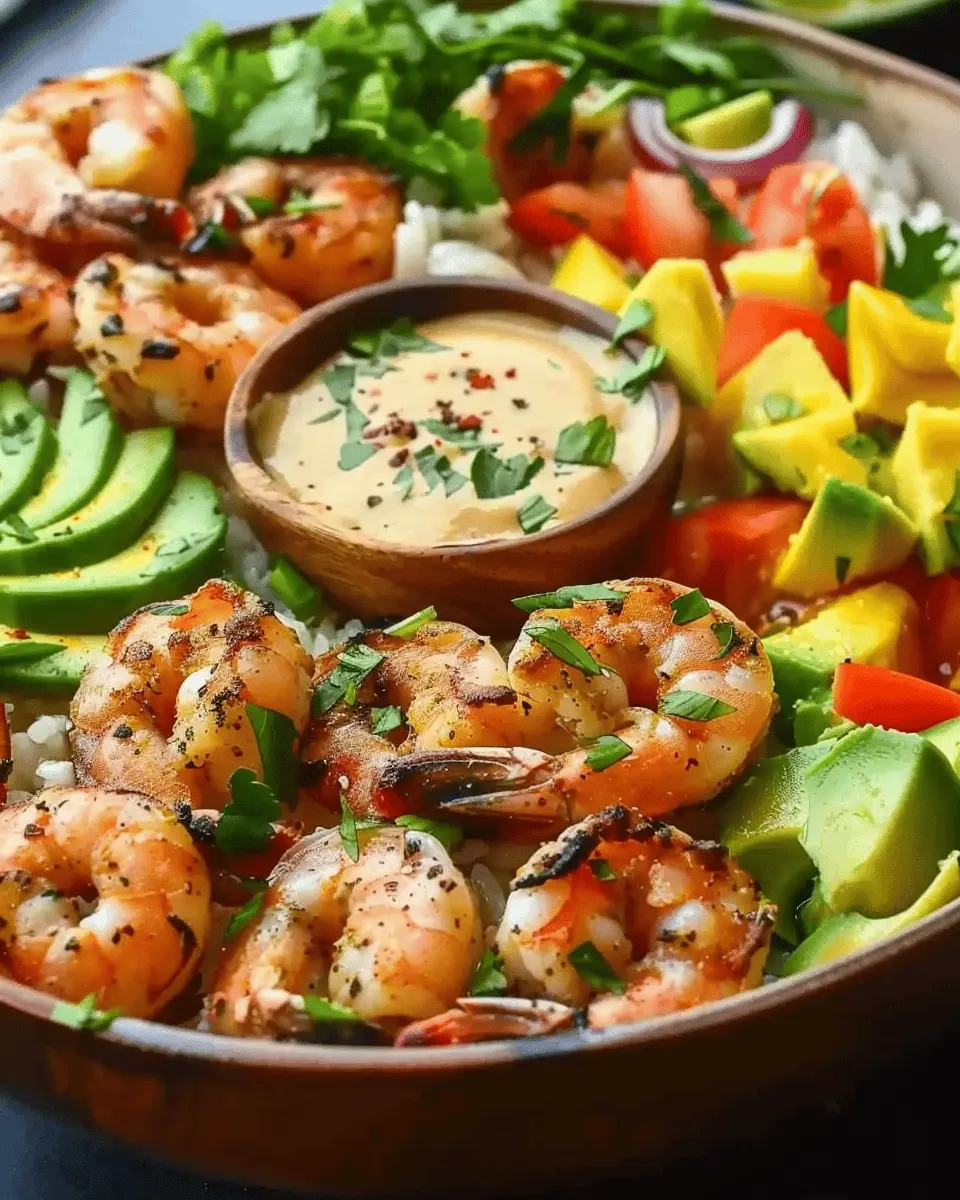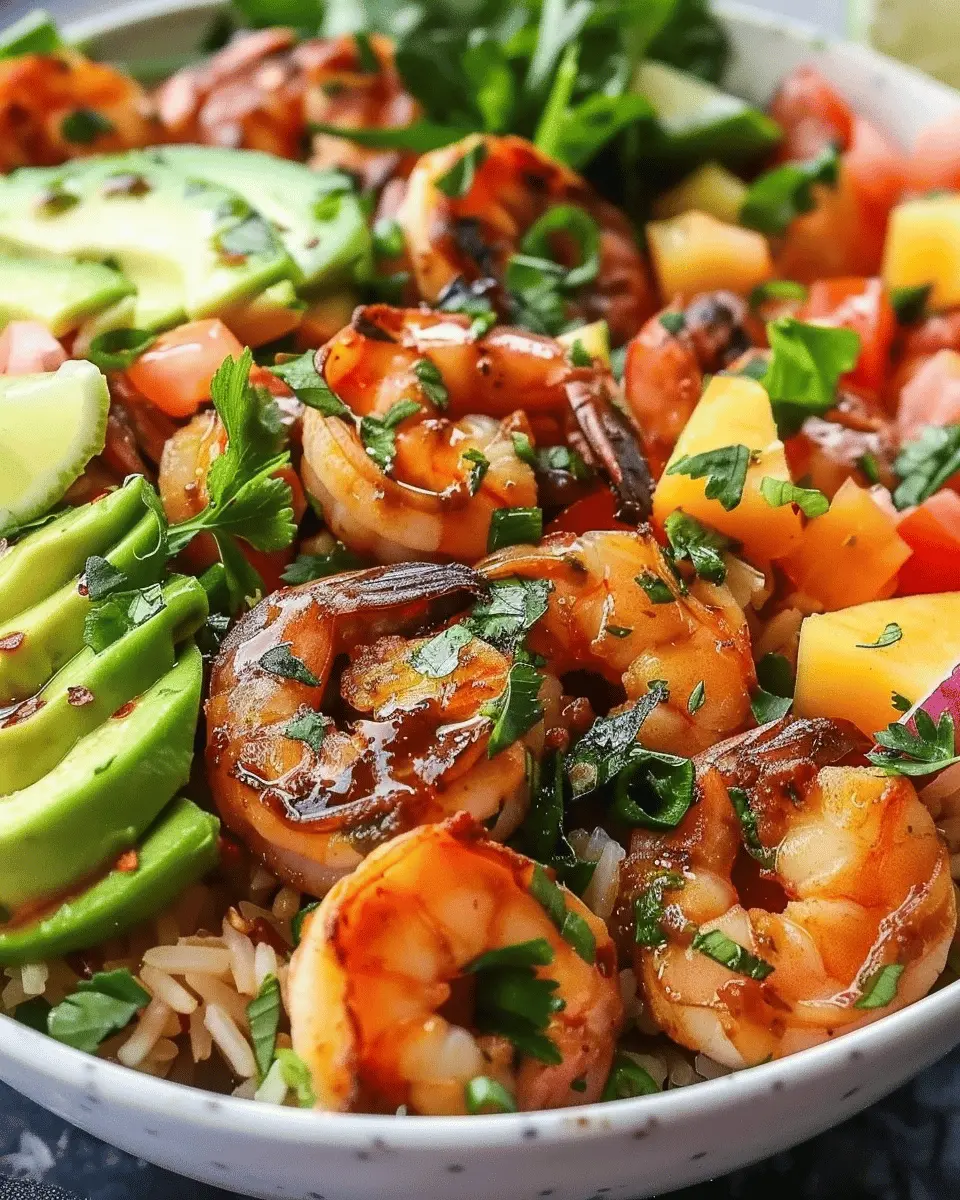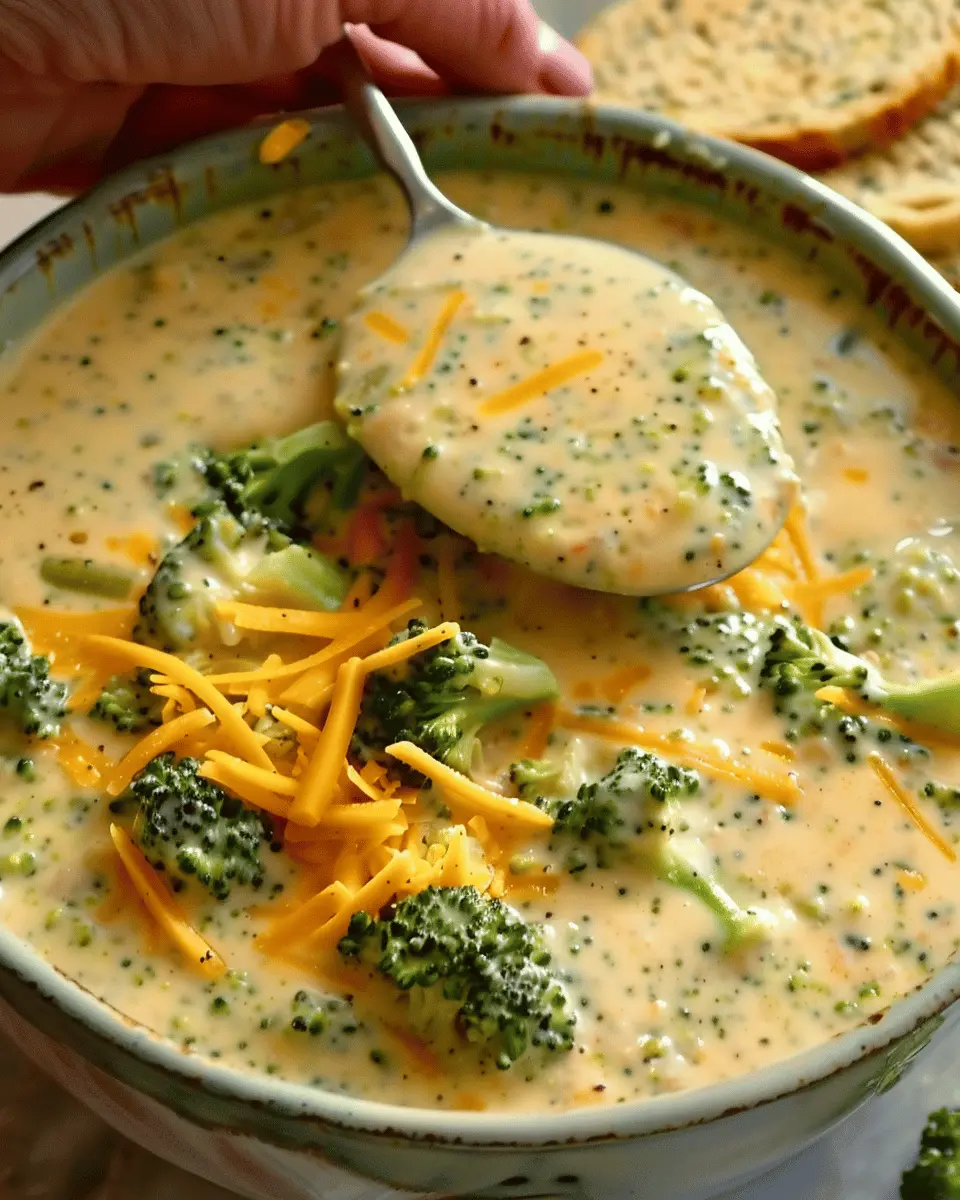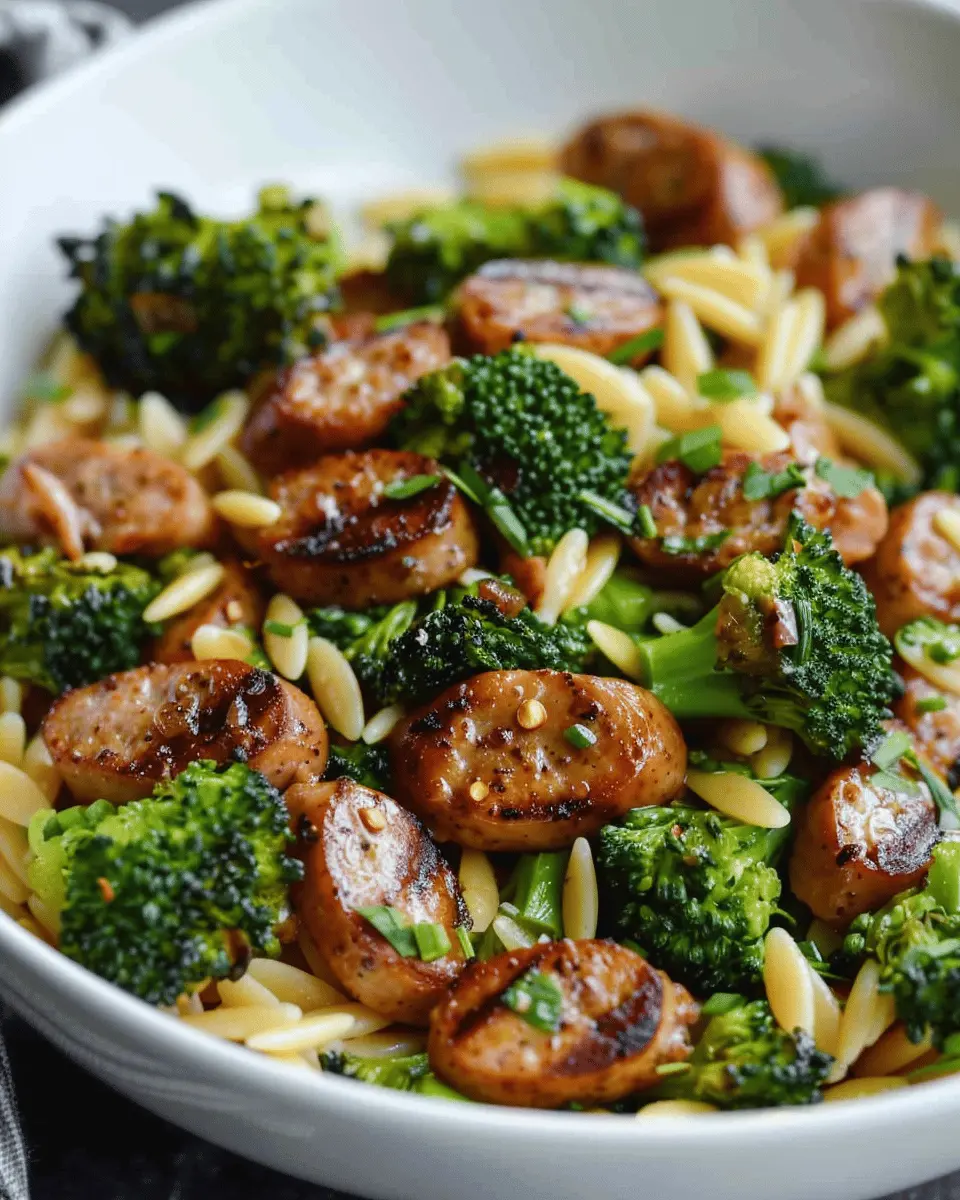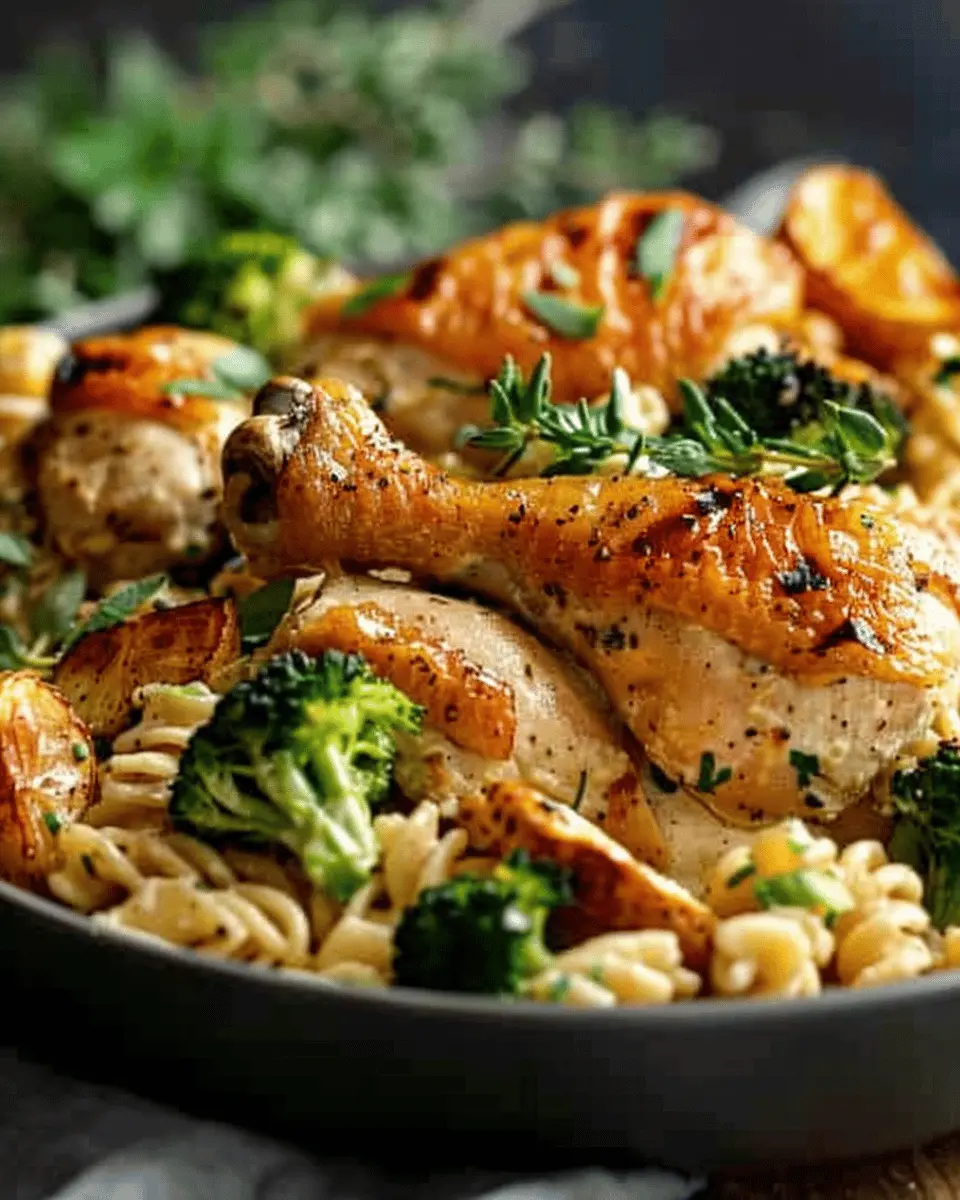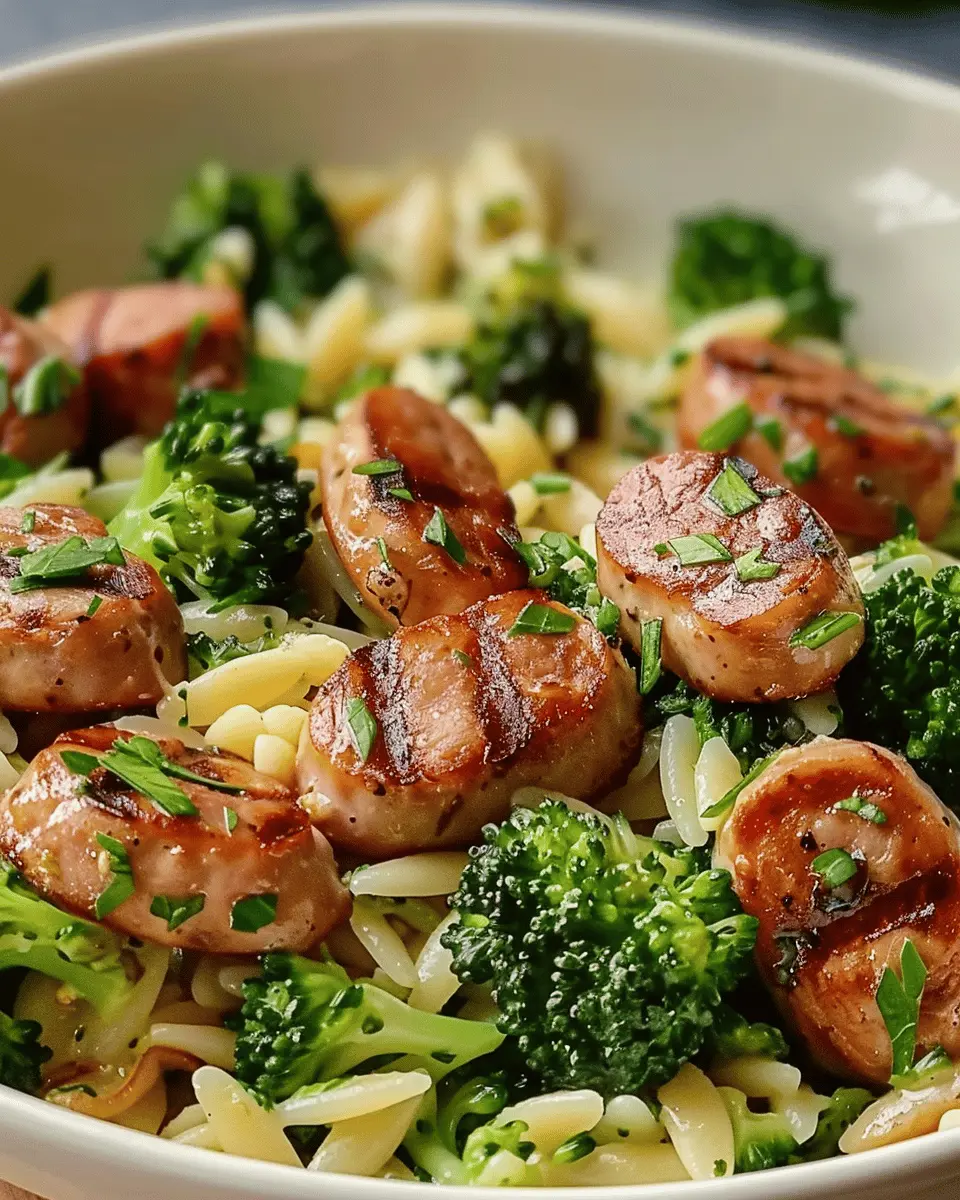Introduction to Pasta Thai
Pasta Thai combines the beloved elements of traditional Thai cuisine with the comforting familiarity of pasta, creating a dish that’s not only delicious but also incredibly practical. For young professionals juggling busy schedules, this dish represents the perfect marriage of flavor and convenience. Imagine coming home after a long day, ready to unwind, but not quite wanting to resort to yet another takeout order. This is where Pasta Thai shines—easy to prepare, vibrant, and bursting with life!
What makes Pasta Thai a perfect meal for young professionals?
Pasta Thai is tailored for those who crave variety without sacrificing time or health. Here’s why it’s a go-to meal:
-
Quick Preparation: You can whip up a delicious bowl of Pasta Thai in 30 minutes or less. This is music to the ears of anyone who has experienced the chaos of a typical weeknight dinner.
-
Nutritious Ingredients: Packed with vegetables, lean proteins, and complex carbs, Pasta Thai is a well-rounded meal. According to the U.S. Department of Agriculture, incorporating a range of colors on your plate not only boosts nutritional value but also increases the enjoyment of your meals!
-
Budget-Friendly: With staple ingredients such as pasta, soy sauce, and frozen or fresh veggies, Pasta Thai can be made with minimal expense. This makes it ideal for those keeping an eye on their finances while striving for culinary satisfaction.
-
Customizable: Whether you prefer shrimp, chicken, or tofu, the flexibility of Pasta Thai allows you to tailor it to your taste preferences or dietary needs. Feeling adventurous? Try adding some Thai chili peppers for a spicy kick!
-
Satisfying Flavors: The marriage of Thai sauces, herbs, and spices with pasta creates an unforgettable flavor profile that’s both complex and comforting. Research has shown that flavorful meals can enhance your mood and overall eating experience.
So, next time you’re rushing home and debating between fast food or a homemade meal, consider making Pasta Thai. It’s an exciting twist on dinner that promises satisfaction without the stress. For more culinary inspirations, you might want to check out Serious Eats for ideas on how to elevate your pasta game!
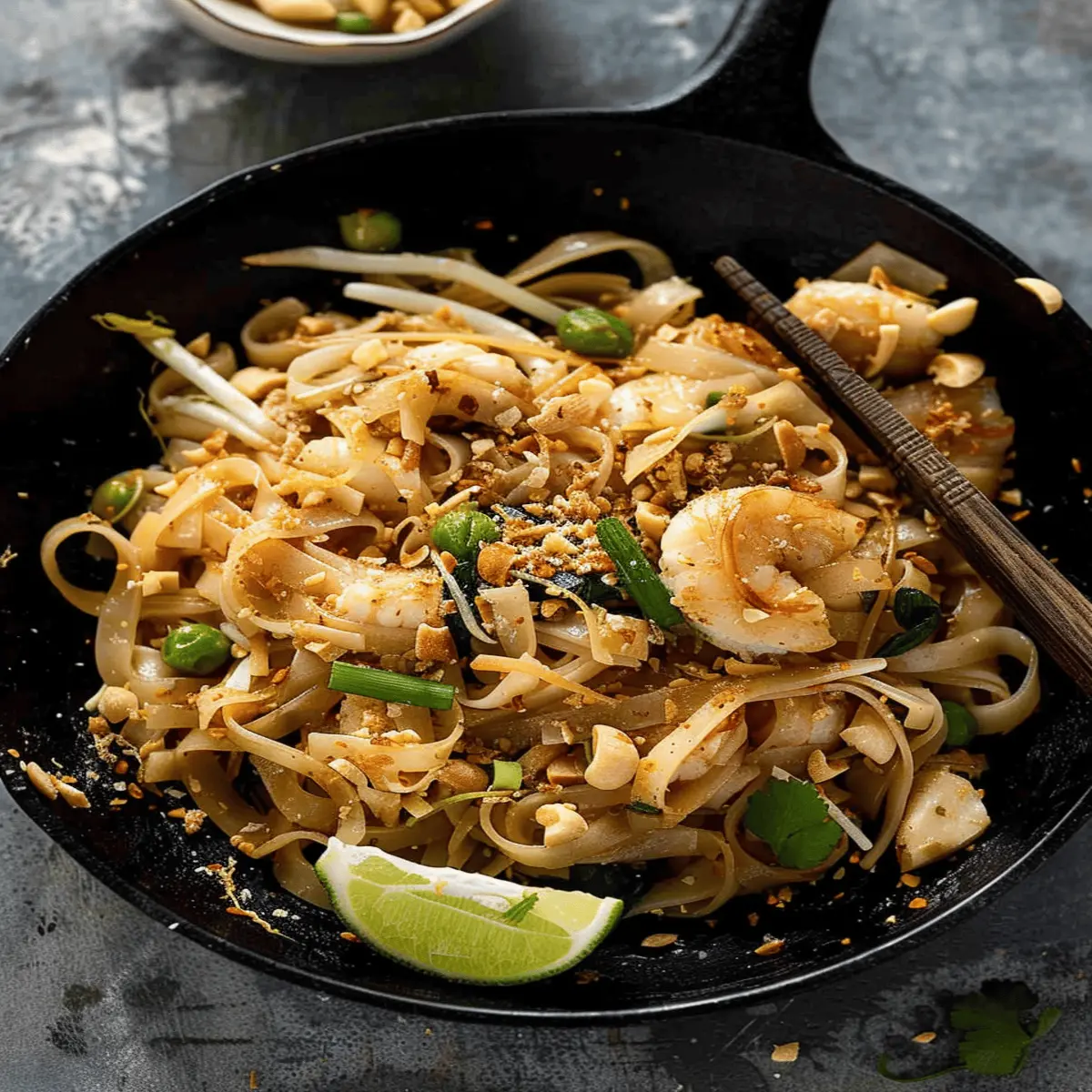
Ingredients for Pasta Thai
When it comes to creating the perfect Pasta Thai, having the right ingredients is key to capturing that vibrant and authentic flavor profile. Here’s a quick look at what you’ll need:
Essential ingredients for the base recipe
To whip up a delicious Pasta Thai, stock your kitchen with these essentials:
- Pasta: Go for rice noodles or spaghetti for a twist.
- Sauce: A combination of soy sauce, lime juice, and peanut butter provides a creamy, tangy base.
- Vegetables: Colorful bell peppers, carrots, and bean sprouts add crunch and nutrition.
- Protein: Chicken, shrimp, or tofu make great choices for a satisfying dish.
These foundational ingredients are straightforward yet pack a punch, making your Pasta Thai both delicious and satisfying.
Optional ingredients for added flavor and texture
Want to elevate your dish? Consider these optional ingredients for an extra zing:
- Fresh herbs: Cilantro and basil bring freshness.
- Spices: Crushed red pepper or chili flakes can introduce some heat.
- Nuts: Peanuts or cashews add a delightful crunch.
These little touches can transform your basic Pasta Thai into a standout meal, so feel free to experiment!
For more recipes and inspiration, check out resources like Serious Eats or Bon Appétit to explore different takes on Asian-inspired dishes!
Step-by-step Preparation of Pasta Thai
Making Pasta Thai is an exciting culinary adventure that combines the comforting qualities of pasta with the vibrant flavors of traditional Thai cuisine. Ready to dive in? Let’s break it down step-by-step, ensuring you have all the tools and ingredients you need for a delicious meal.
Prepare all ingredients
First things first, gather your ingredients. Having everything at your fingertips will make the cooking process smoother and more enjoyable. Here’s what you’ll need:
- Pasta: Spaghetti or rice noodles work beautifully in this dish.
- Vegetables: Bell peppers, carrots, and snap peas add crunch and nutrition.
- Proteins: Chicken, tofu, or shrimp are fantastic options.
- Sauces: You’ll want soy sauce, fish sauce, and a touch of sweet chili sauce for that Thai flair.
- Aromatics: Garlic and ginger will imbue your dish with enticing aromas.
- Garnishes: Fresh cilantro, lime wedges, and crushed peanuts for that finishing touch.
As you gather your ingredients, take a moment to appreciate the colors and textures. This is where the magic begins!
Cook the pasta al dente
Next, let’s talk pasta. Cooking it properly is crucial. Bring a large pot of salted water to a vigorous boil. Add your pasta and cook according to the package directions, usually around 8-10 minutes. The goal is to achieve that perfect al dente texture, which means the pasta should be firm to the bite.
- Tip: Make sure to reserve about half a cup of the pasta cooking water before draining. This starchy water will help your sauce cling to the pasta later!
Sauté the vegetables
While the pasta is cooking, it’s time for the fun part—sautéing the veggies! Heat some oil in a large skillet or wok over medium-high heat. Start with the aromatics: add minced garlic and ginger, and sauté until fragrant.
Then, toss in your vegetables:
- Bell peppers: Thinly sliced for quick cooking.
- Carrots: Julienne to ensure they cook evenly.
- Snap peas: Add these last, as they only need a minute or two to become tender-crisp.
Stir-frying these beauties for about 5-7 minutes keeps them vibrant and crunchy. For more tips on the health benefits of these vegetables, check out Healthline’s guide on colorful veggies.
Mix in the sauces and seasonings
Once your vegetables are beautifully sautéed, it’s time to bring on the sauces! Lower the heat slightly, and add your soy sauce, fish sauce, and sweet chili sauce. Stir to coat the vegetables evenly.
- Extra flavor: Consider adding a sprinkle of crushed red pepper or a teaspoon of brown sugar to balance the flavors.
Let everything simmer for a few minutes. This step is critical—let those vibrant flavors meld together while you toss the mixture gently.
Combine pasta and sauce
Time to unite your two components! Add the cooked pasta directly into the skillet with the sauce and vegetables. Using tongs or a large fork, toss everything together. If it seems too dry, add a splash of that reserved pasta water you set aside earlier.
This is where you can adjust seasonings as necessary. Don’t be afraid to taste! Craving a bit more brightness? A squeeze of lime juice will elevate the flavors immensely.
Garnish and serve
Finally, let’s talk presentation. Serve your Pasta Thai in bowls, and don’t forget to have fun with your garnishes:
- Fresh cilantro: Sprinkle generously for herbal notes.
- Crushed peanuts: Add texture and crunch.
- Lime wedges: A squeeze just before digging in adds brightness.
And there you have it—a stunning, flavorful dish that’s perfect for a busy weeknight or impressing guests. Enjoy your culinary creation and relish in the wonderful fusion of Pasta Thai. Happy cooking!
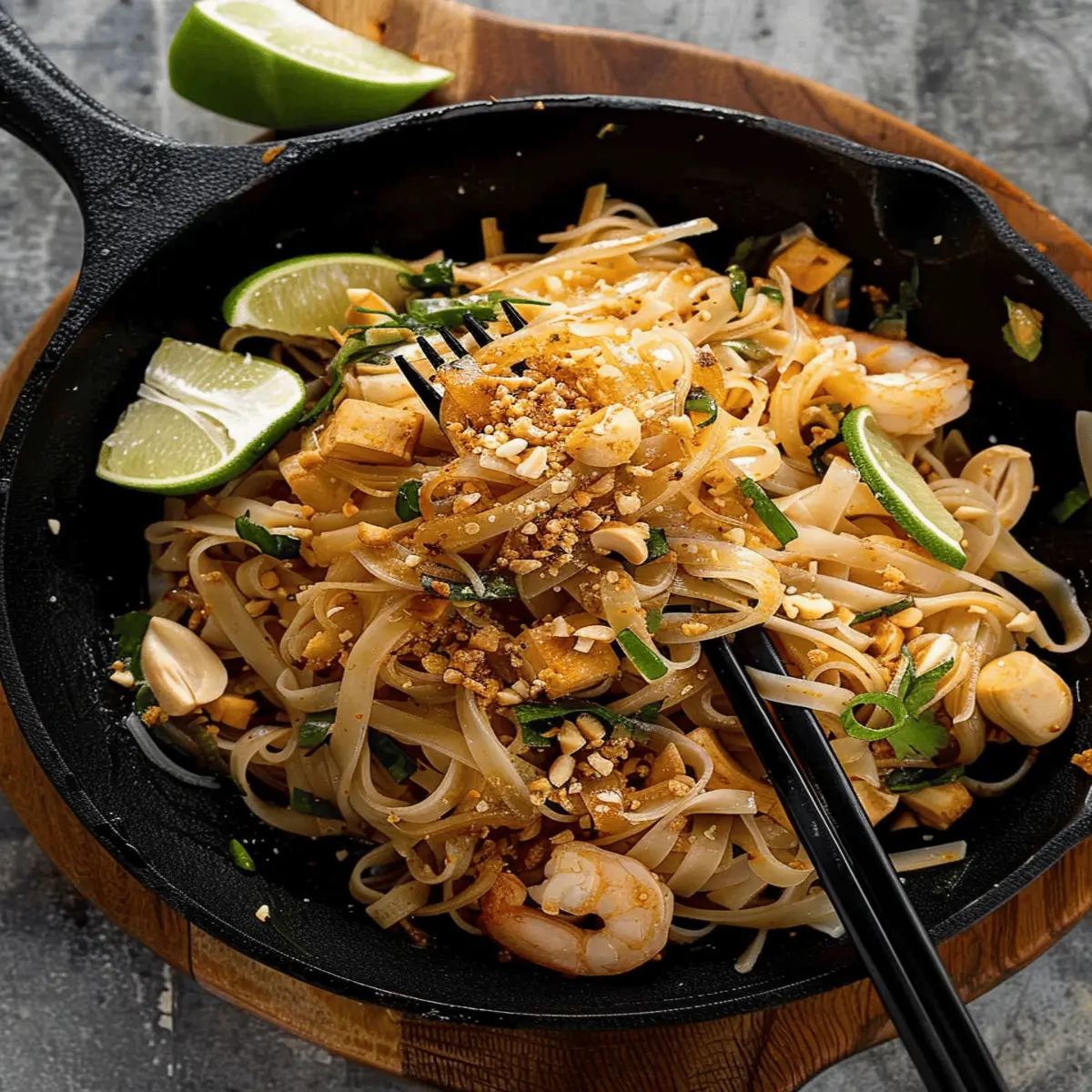
Variations of Pasta Thai
Pasta Thai is a versatile dish that can adapt to various tastes and dietary preferences. Let’s explore some delightful variations that will elevate your home cooking experience and tantalize your taste buds.
Spicy Thai Peanut Pasta
If you’re a fan of heat, Spicy Thai Peanut Pasta is your go-to option. The richness of peanut sauce combined with a kick of Sriracha creates an unforgettable experience. To prepare this dish:
- Cook your choice of pasta until al dente.
- Whisk together peanut butter, soy sauce, lime juice, honey, and Sriracha for the sauce.
- Toss in sautéed vegetables like bell peppers and snap peas for crunch.
- Top with crushed peanuts and fresh cilantro for a zesty finish.
This fiery dish not only satisfies cravings but also delivers a punch of protein and healthy fats. You can find numerous variations on popular cooking sites like Food Network or Serious Eats.
Vegetarian Pasta Thai
For those who lean towards a plant-based diet, Vegetarian Pasta Thai is a fantastic choice. This version focuses on colorful vegetables and a delightful sauce:
- Opt for whole wheat pasta for added fiber.
- Use a blend of seasonal vegetables such as zucchini, carrots, and broccoli.
- Toss with a light soy-lime dressing and garnish with fresh basil and peanuts.
Not only is this variation packed with nutrients, but it also allows you to embrace the beautiful colors and textures of fresh ingredients.
Seafood Pasta Thai
Bringing an oceanic twist to Pasta Thai, the Seafood Pasta Thai version is perfect for seafood lovers. With shrimp or fish, you get a protein boost that’s as delicious as it is nutritious:
- Sauté your seafood of choice until perfectly cooked.
- Combine with pasta and a coconut-lime sauce to add depth and flavor.
- Serve over a bed of fresh greens for a refreshing touch.
For additional tips and tricks on preparing seafood, consider checking out SeafoodWatch for sustainable options.
No matter which variation you choose, Pasta Thai is sure to impress and satisfy. Get creative in the kitchen—your next favorite dish is just a few ingredients away!
Cooking Tips and Notes for Pasta Thai
Common Pitfalls to Avoid
When whipping up pasta Thai, it’s easy to overlook a few key details. Here are some common pitfalls to steer clear of:
- Overcooking the Pasta: The ideal texture is al dente. Remember, it continues cooking in the pan after draining.
- Choosing the Wrong Noodles: While traditional Thai dishes may use rice noodles, experimenting with spaghetti or linguine can yield delightful results.
- Ignoring Fresh Ingredients: Fresh herbs and vegetables elevate your dish significantly; don’t skimp on those!
Expert Tips for Enhancing Flavor
To truly make your pasta Thai shine, consider these expert suggestions:
- Layer Flavors: Start by sautéing garlic and shallots for a fragrant base. A splash of fish sauce or soy sauce adds umami depth.
- Spice it Up: Don’t hesitate to incorporate chili flakes or fresh chilies to kick things up a notch.
- Acid is Essential: A squeeze of lime adds brightness, balancing the richness of sauces.
For more nuanced flavor profiles, check out resources from Serious Eats or Bon Appétit. They’re fantastic for refining your cooking skills!
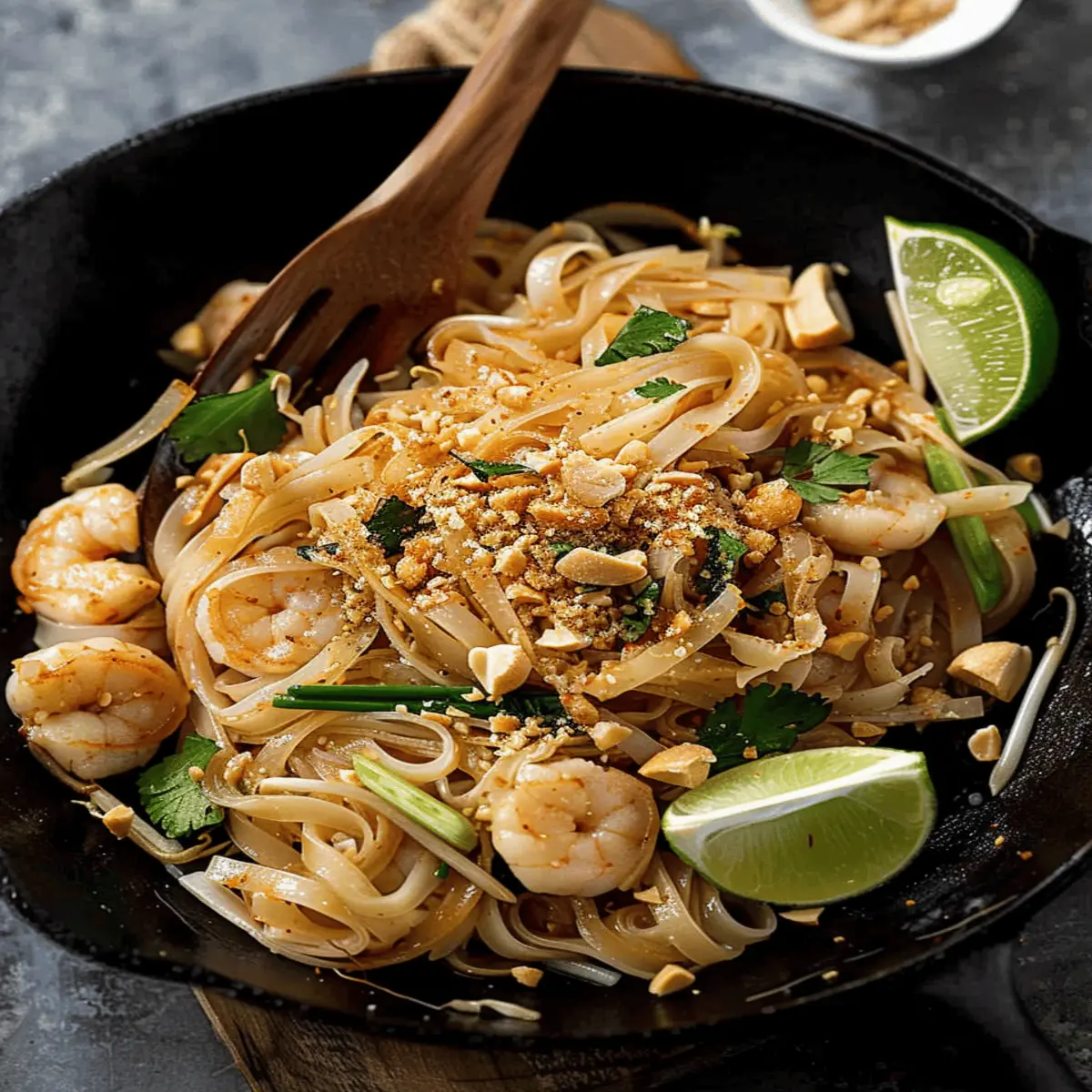
Serving Suggestions for Pasta Thai
Ideal side dishes to complement Pasta Thai
When enjoying Pasta Thai, the right side dishes can elevate your meal to new heights. Consider pairing your dish with:
- Fresh spring rolls: Light and refreshing, these rolls packed with veggies and shrimp add a delightful crunch.
- Thai salad: A zesty combination of papaya, carrots, and herbs offers a bright, flavorful contrast to the heartiness of the pasta.
- Steamed edamame: Simple yet satisfying, they provide a protein boost while balancing the dish’s flavors.
Feel free to check out more about Thai culinary traditions on platforms like ThaiFood.
Pairing drinks with your Pasta Thai dish
Now, let’s talk about beverages! A refreshing drink can tie your meal together perfectly. Here are some great options:
- Thai iced tea: With its sweetened creaminess, this classic drink complements the rich flavors of your Pasta Thai beautifully.
- Sauvignon Blanc: If you’re inclined towards wine, this crisp white wine brings out the vibrancy of the dish without overpowering it.
- Coconut water: For a non-alcoholic choice, the natural sweetness of coconut water refreshes the palate after every bite.
Mixing and matching these suggestions not only enhances your meal but creates memorable dining experiences. Enjoy your Pasta Thai adventure!
Time Breakdown for Pasta Thai
Preparation time
Getting your ingredients ready for Pasta Thai is a breeze and should take about 15 to 20 minutes. During this time, you can chop up fresh veggies like bell peppers, carrots, and snap peas while also measuring out your sauce components. Prepping everything beforehand allows for a smoother cooking process—trust me, it makes a world of difference!
Cooking time
Once you’ve gathered your ingredients, the actual cooking will only take about 10 to 15 minutes. This quick cook time makes Pasta Thai perfect for busy weeknights—just toss everything into a hot skillet, and you’ll have a delicious meal in no time.
Total time
Adding it all up, the total time for preparing and cooking your Pasta Thai is approximately 30 to 35 minutes. With quick prep and cook times, this recipe is not only quick but also bursting with flavor, making it a fantastic option for those evenings when you’re craving something satisfying yet easy.
If you want to dive deeper into the art of cooking pasta, check out resources like Serious Eats or Food Network for more tips and inspiration!
Nutritional Facts for Pasta Thai
Calories and Nutritional Benefits
When you indulge in a delicious serving of pasta Thai, you can expect a hearty meal that packs a nutritional punch. Typically, a single serving ranges from 300 to 500 calories, depending on the ingredients used. It’s an excellent source of energy, making it a great option for those busy workdays when you need a midday boost. Plus, with the right veggie and protein additions, it can offer a balanced approach to your diet.
Breakdown of Essential Nutrients
Dive deeper into the goodness of pasta Thai and you’ll find an irresistible blend of nutrients:
- Carbohydrates: The pasta primarily provides complex carbs for sustained energy.
- Protein: Adding tofu, chicken, or shrimp can help you hit your daily protein goals.
- Vitamins & Minerals: Fresh veggies, like bell peppers and carrots, not only add color but also essential vitamins A and C.
Curious about how these nutrients stack up against other dishes? Check out the USDA’s FoodData Central for more insights on common ingredients you can use. By making thoughtful ingredient choices, you can craft a pasta Thai meal that’s not only delicious but also nourishing.
FAQ about Pasta Thai
Can I make Pasta Thai ahead of time?
Absolutely! Pasta Thai is a great dish to prepare in advance. Make the sauce and cook the vegetables a day ahead, then store them separately from the noodles. When you’re ready to eat, simply heat everything together on the stove. This way, you’ll have a flavorful and convenient meal for your busy weeknight dinners or meal-prep prepared in a flash!
What types of pasta work best for this recipe?
While traditional Pad Thai uses rice noodles, you can flex your culinary creativity by using various types of pasta in your Pasta Thai. Some excellent choices include:
- Rice Noodles: For that authentic feel.
- Spaghetti: A great go-to if you’re looking for something familiar.
- Zucchini Noodles: A fantastic low-carb alternative.
Whichever you choose, just remember to cook the pasta al dente to ensure it holds up during the stir-fry process.
How can I adjust the spice level in Pasta Thai?
If you’re not sure how spicy you want your Pasta Thai, start with a small amount of chili flakes and taste as you go. Here’s how you can tweak it:
- Mild: Omit the chili flakes or use just a pinch.
- Medium: Add a teaspoon of chili paste or sauce.
- Hot: Don’t shy away from adding fresh Thai chilies or a dash of sriracha.
Always remember to balance the spice with sweetness or acidity. A dash of lime or a bit of sugar can mellow the heat while enhancing flavor.
For more tips on customizing your dishes, check out Serious Eats for expert guidance! Exploring different flavor profiles can elevate your Pasta Thai to new heights.
Conclusion on Pasta Thai
Why Pasta Thai is a great addition to your homemade meal repertoire
Incorporating pasta Thai into your cooking rotation can breathe new life into your weeknight dinners. This dish not only surprises the palate with its fusion of flavors, but it also gives you the chance to experiment with fresh ingredients, adapting the recipe to fit your taste.
Here are a few reasons why Pasta Thai deserves a spot on your meal list:
- Versatility: Whether you’re a vegetarian or a meat lover, you can easily customize this dish to suit your dietary preferences.
- Quick and Easy: Often ready in under 30 minutes, it’s perfect for those busy weeknights.
- Nutrient-Rich Ingredients: Packed with vegetables and protein, this dish promotes a balanced meal.
Cooking doesn’t have to be daunting, and pasta Thai offers a delicious way to elevate your culinary skills. Embrace the adventure and check out resources like Serious Eats and BBC Good Food for more inspiration and techniques to master this fusion delight. Happy cooking!
PrintPasta Thai: Irresistibly Bold Flavors You’ll Love at Home
Pasta Thai combines the delightful flavors of traditional Thai cuisine with the comforting texture of pasta, creating a dish that is sure to impress.
- Prep Time: 10 minutes
- Cook Time: 10 minutes
- Total Time: 20 minutes
- Yield: 2 servings 1x
- Category: Main Dish
- Method: Stir-fry
- Cuisine: Thai
- Diet: Gluten-free
Ingredients
- 200 grams rice noodles
- 3 tablespoons soy sauce
- 2 tablespoons fish sauce
- 1 tablespoon lime juice
- 1 tablespoon sugar
- 2 cloves garlic, minced
- 1 red chili, sliced
- 100 grams bean sprouts
- 2 green onions, chopped
- 1/4 cup chopped cilantro
- 1 tablespoon roasted peanuts, crushed
Instructions
- Soak the rice noodles in hot water for about 20 minutes or until softened.
- In a bowl, mix soy sauce, fish sauce, lime juice, and sugar to create the sauce.
- In a large skillet, heat some oil over medium heat and sauté garlic until fragrant.
- Add the softened noodles and sauce to the skillet, stir-frying until everything is well combined.
- Add in the chili, bean sprouts, and green onions, cooking for an additional 2-3 minutes.
- Remove from heat and stir in the cilantro and crushed peanuts before serving.
Notes
- For a vegetarian version, omit the fish sauce and use extra soy sauce.
- You can add your choice of proteins like chicken, shrimp, or tofu.
Nutrition
- Serving Size: 1 plate
- Calories: 400
- Sugar: 5 grams
- Sodium: 800 mg
- Fat: 12 grams
- Saturated Fat: 2 grams
- Unsaturated Fat: 8 grams
- Trans Fat: 0 grams
- Carbohydrates: 60 grams
- Fiber: 3 grams
- Protein: 14 grams
- Cholesterol: 0 mg
Keywords: PASTA Thai

